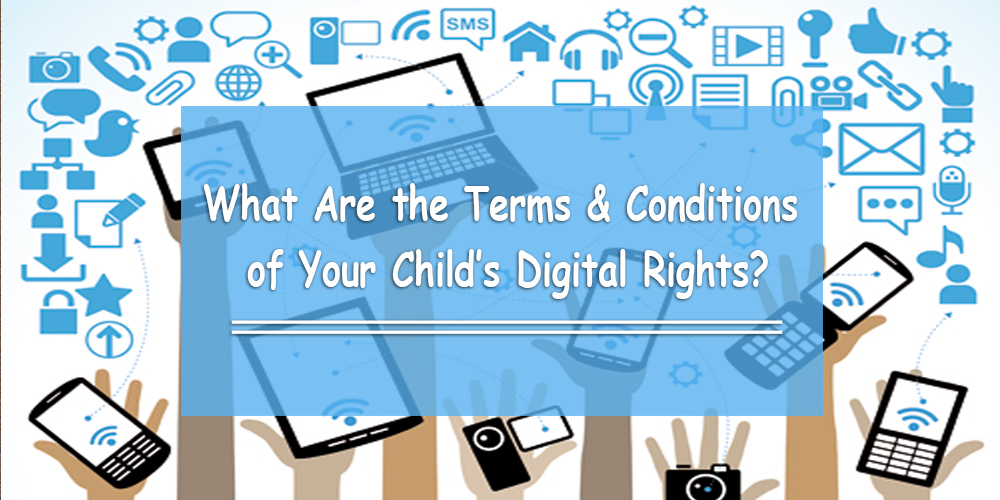How much do you think your child understands about what they’ve agreed to ‘give up’ when they create a social media account? It’s very likely that most adults don’t know what they’re giving up either.
What do we mean exactly?
Think back to the time when you first created your last social media account. What was the final thing you had to do before logging into your account for the first time?
You had to agree to the Terms & Conditions.
But let’s be honest here. Did you honestly read the Terms & Conditions before signing up to any social media network? If not, how likely do you think your child understands the Terms & Conditions before signing up, particularly if you don’t go through the document with them?
Despite the fact that they agree to the Terms & Conditions, most kids still don’t know what their privacy rights are. As a result, young people are willingly and unwittingly giving away personal information with no real understanding of who might obtain that information in the future.
What Digital Rights Are You (and Your Child) Giving Up?
The Growing Up Digital task force – a group convened by the Children’s Commissioner for England – released a report in the first week of January 2017. They found that almost half of 8- to 11-year-olds agreed to give social media giants such as Facebook and Instagram control over their data… without any accountability. In other words, the children waived their privacy rights and allowed any content they posted to be sold around the world.
Of course, they don’t knowingly do this, and the children are certainly not at fault. (As mentioned earlier, most of us don’t even go through the Terms & Conditions.) However, it is our duty to protect our kids and to inform them of what these Terms & Conditions actually mean.
…But These Terms & Conditions Are So Hard to Decode
If you’ve read any social media network’s Terms & Conditions, you’ll know that it’s like trying to listen to a court hearing in a different language.
First of all, the language filled with legal jargon, making it difficult to read. According to the Growing Up Digital taskforce, the document registered at a post-graduate reading level. (How is a 13-year-old going to understand that?)
Not only that, but these documents are extremely long. Just one of these documents contain over 5,000 words. (How can we expect a 13-year-old to read through that in their own time before using the account?)
In the same study cited above, the Growing Up Digital taskforce asked a group of teenagers to read and interpret Instagram’s Terms & Conditions. Most of them begged to stop after 20 minutes and only getting through half of the document:
• “Boring! It doesn’t make any sense.” (13-year-old)
• “I don’t know [about my privacy rights] due to the sheer amount of writing and the lack of larity within the document.” (15-year-old)
• “You have to take about 10 minutes on each sentence … Do we have to read the whole thing? We’re not taking it in, we’re just reading the sentences. You could have, like, toned it down for us.” (13-year-old)
Bingo! We need this document to be “toned down.”
How the Growing Up Digital Taskforce Makes Things Easier to Read
Here is a paragraph taken from Instagram’s Terms & Conditions:
“You are responsible for any activity that occurs through your account and you agree you will not sell, transfer, license or assign your account, followers, username, or any account rights. With the exception of people or businesses that are expressly authorized to create accounts on behalf of their employers or clients, Instagram prohibits the creation of and you agree that you will not create an account for anyone other than yourself. You also represent that all information you provide or provided to Instagram upon registration and at all other times will be true, accurate, current and complete and you agree to update your information as necessary to maintain its truth and accuracy.”
(It’s no wonder why these teens got bored while reading the document, right?)
The Growing Up Digital taskforce’s Jenny Afia, a privacy lawyer, simplified that paragraph with this sentence:
“Don’t use anybody else’s account without their permission or try to find out their login details.”
The task force said the same message could be applied to most social media sites. However, they chose Instagram because of its popularity among teenagers. (Fun Fact: most teenagers have a Facebook account, but many of them aren’t active on it.)
Conclusion
The message that the Growing Up Digital Taskforce is simple: discuss the Terms & Conditions with your kids. You might not have the time (or the patience) to read through the legal document of every social media site. However, it is important for teens to be aware of how their favorite sites work and to discuss the repercussions they may face online.
Plain, everyday language is good to be transparent… and until we can figure out an alternative for all the Terms & Conditions written in ‘Legalese,’ it’s important to simply stay aware and stay updated with what’s going on in the world of digital.


